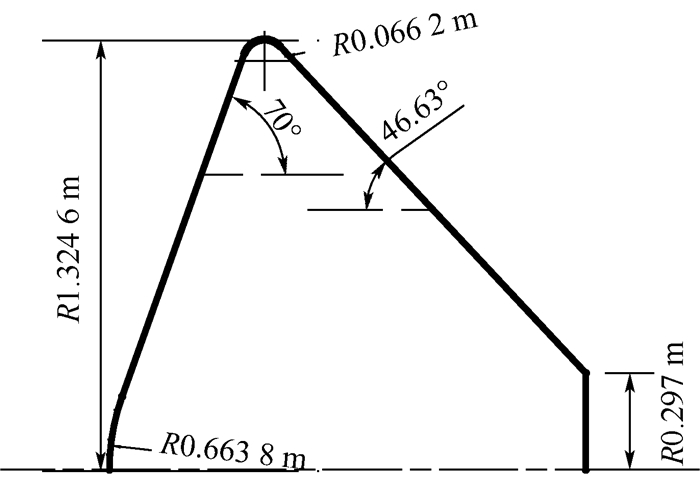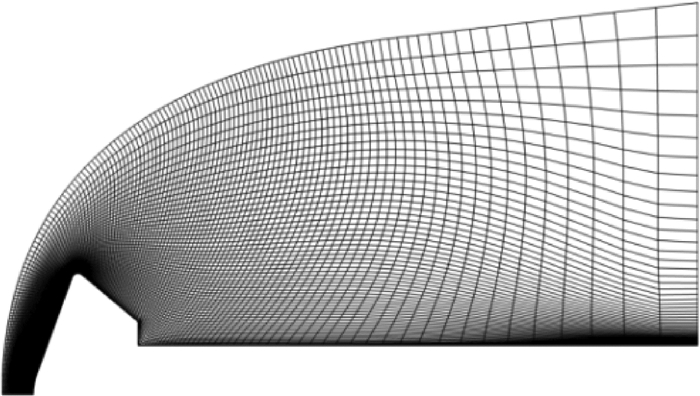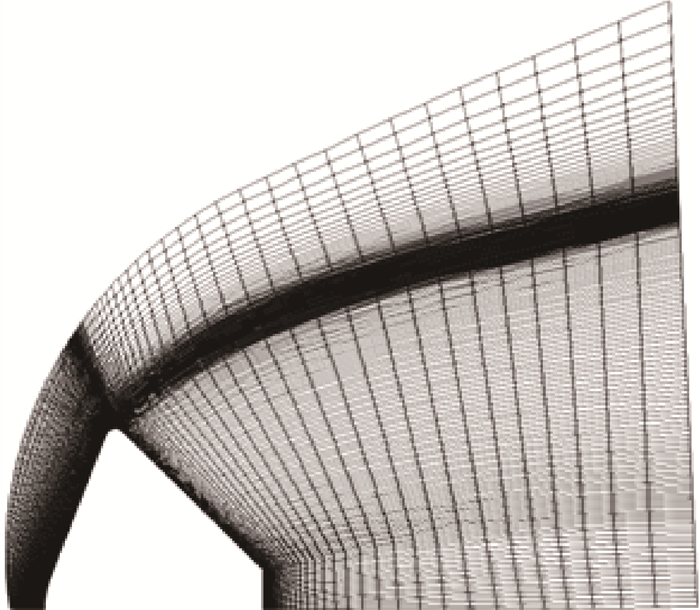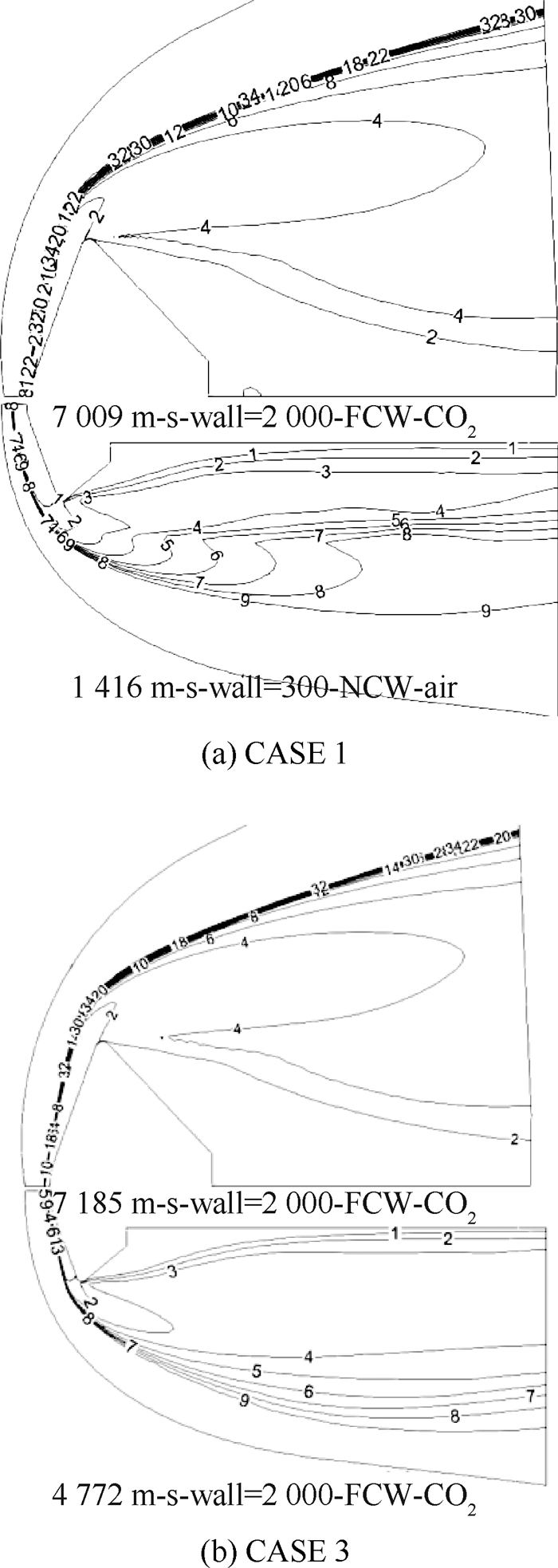Discussion on correlation between wind tunnel test and flight of Mars reentry vehicle
-
摘要:
由于风洞试验条件限制,难以完全模拟火星再入飞行器真实飞行环境,因此需要建立火星再入飞行器风洞条件与真实飞行之间的关联关系。基于国外文献公开数据,采用数值方法和对比分析方法探讨了类"探路者号"外形的火星再入飞行器的风洞试验与真实飞行之间的外推方法。结果表明,在高焓空气风洞和常规空气风洞试验条件下,可以将模型驻点附近的无量纲压力和压力系数作为相关性参数,将风洞条件与飞行条件相关联起来,但是不能直接利用风洞试验的热流、无量纲热流和Stanton数作为关联参数;在高焓CO2风洞试验条件下,可以利用模型驻点附近的无量纲压力、压力系数和Stanton数作为外推参数,但是不能直接将风洞试验的热流、无量纲热流作为相关性参数,将风洞条件下的风洞数据通过外推获取飞行条件下飞行器的性能参数。
Abstract:Due to the limitations of wind tunnel test conditions, the real flight environment of Mars reentry aircraft is difficult to fully be simulated, so it is necessary to establish the relationship of Mars reentry vehicle between windtunnel conditions and real flight. In this investigation, based on the published data of the literatures, the numerical method is used to study the extrapolation methods between the wind tunnel test and the real flight of Mars re-entry vehicle with the shape of the Pathfinder. The results show that under the conditions of high enthalpy air wind tunnel and conventional air wind tunnel test, the dimensionless pressure and pressure coefficient of near the stagnation point of the windtunel model can be used as a correlation parameters between the wind tunnel that and the flying conditions. However, the heat flow, the dimensionless heat flow and Stanton number of wind tunnel test cannot be directly used as correlation parameters under the conditions of high enthalpy air wind tunnel test and conventional air wind tunnel test. Under the high enthalpy CO2 wind tunnel test conditions, the pressure coefficient, dimensionless pressure and Stanton number near the windtunnel model's stagnation point can be used as extrapolation parameters, but not the heat flow and dimensionless heat flow of the wind tunnel test are directly used as correlation parameters to obtain the performance parameters of the aircraft under flight conditions.
-
Key words:
- Mars /
- hypersonic /
- wind tunnel /
- reentry /
- correlation /
- aerodynamic force /
- aerothermodynamics
-
变量 CASE 1 CASE 2 CASE 3 飞行条件 风洞条件 飞行条件 风洞条件 飞行条件 风洞条件 u∞/(m·s-1) 7 009 1 416 7 263 1 422 7 185 5 162 4 772 ρ∞/(kg·m-3) 1.66×10-4 8.680×10-3 8.64×10-5 4.51×10-3 1.095×10-4 5.712×10-3 5.789×10-3 T∞/K 160.3 52.45 156.5 53.31 158.8 1 113 1 088 p∞/Pa 5.10 130.6 2.60 69 3.338 1 824 1 191 Ma∞ 34 9.80 35.5 9.68 36.20 7.93 9.71 
0.12×106 3.187×106 0.095×106 1.621×106 0.126×106 0.66×106 0.66×106 ρ∞L/(kg·m-2) 4.41×10-4 4.41×10-4 2.29×10-4 2.29×10-4 2.94×10-4 2.90×10-4 2.94×10-4 组分(体积分数) 97%CO2+3%N2 21%O2+79%N2 97%CO2+3%N2 21%O2+79%N2 97%CO2+3%N2 21%O2+79%N2 100%CO2 编号 化学反应 1 N2+M 
2 O2+M 
3 NO+M 
4 NO+O 
5 N2+O 
编号 化学反应 1 CO2+M 
M2=N,O,C2 CO+M 
M2=N,O,C3 N2+M 
M2=N,O,C4 O2+M 
M2=N,O,C5 NO+M 
M2=N2,O2,CO6 NO+O 
7 N2+O 
8 CO+O 
9 CO2+O 
表 4 对比条件和计算结果(飞行条件)
Table 4. Comparison conditions and computation results(flight condition)
高度/
km速度/(m· s-1) 驻点热流 文献[8]结果/ (106W·m-2) 计算结果/ (106W·m-2) 误差/ % 85.000 7 504 0.099 0.105 6.00 64.599 7 472 0.392 0.383 1.26 56.026 7 364 0.565 0.550 2.72 43.097 6 774 1.140 1.132 0.87 41.204 6 596 1.180 1.163 0.84 -
[1] 苗文博, 吕俊明, 程晓丽, 等.火星进入热环境预测的热力学模型数值分析[J].计算物理, 2015, 32(4):410-415. doi: 10.3969/j.issn.1001-246X.2015.04.005MIAO W B, LV J M, CHENG X L, et al.Numerical analysis of thermodynamics models for Mars entry aeroheating prediction[J].Compute Physics, 2015, 32(4):410-415(in Chinese). doi: 10.3969/j.issn.1001-246X.2015.04.005 [2] LU F K, MARREN D.Advanced hypersonic test facilities[M].Reston:AIAA, 2002:639-650. [3] 董维中.热化学非平衡效应对高超声速流动影响的数值计算与分析[D].北京: 北京航空航天大学, 2006.DONG W Z.Numerical simulation and analysis of thermochemical nonequilibrium effects at hypersonic flow[D].Beijing: Beihang University, 2006(in Chinese). [4] BUR R, BENAY R, CHANETZ B, et al.Experimental and numerical study of the Mars Pathfinder vehicle[J].Aerospace Science and Technology, 2003, 7(7):510-516. doi: 10.1016/S1270-9638(03)00062-2 [5] ARMENISE I, REYNIER P, KUSTOVA E.Advanced models for vibrational and chemical kinetics applied to Mars entry aerothermodynamics[J].Journal of Thermophysics and Heat Transfer, 2015, 30(4):705-720. [6] PATERNA D, MONTI R, SAVINO R, et al.Experimental and numerical investigation of Martian atmosphere entry[C]//Proceedings of 39th Aerospace Sciences Meeting and Exhibit, Aerospace Sciences Meetings.Reston: AIAA, 2002: 227-236. [7] HOLLIS B, PERKINS J.Hypervelocity aeroheating measurements in wake of Mars mission entry vehicle: AIAA-95-2314[R].Reston: AIAA, 1995. [8] HOLLIS B R.Experimental and computational aerothermodynamics of a Mars entry vehicle: NAG1-1663[R].Washington, D.C.: NASA Langley Research Center, 1996. [9] GNOFFO P A, WEILMUENSTER K J, BRAUN R D, et al.Influence of sonic-line location on Mars Pathfinder probe aerothermodynamics[J].Journal of Spacecraft and Rockets, 1996, 33(2):169-177. doi: 10.2514/3.26737 [10] WILLCOCSON W H.Mars Pathfinder heatshield design and flight experience[J].Journal of Spacecraft and Rockets, 1999, 36(3):374-379. doi: 10.2514/2.3456 [11] LAKSHMI K S, ANOOP P, SUNDAR B.Aerodynamic heating predictions for spacecraft entering Mars atmosphere[C]//Proceedings of the 23rd National and 1st International ISHMT-ASTFE Heat and Mass Transfer Conference (IHMTC 2015), 2015. [12] MILOS F, CHEN Y K, CONGDON W, et al.Mars Pathfinder entry temperature data, aerothermal heating, and heatshield material response: AIAA-98-2681[R].Reston: AIAA, 1998. [13] PARK C.On convergence of computation of chemically reacting flows: AIAA-1985-247[R].Reston: AIAA, 1985. [14] PARK C, HOWE J T, JAFFE R L, et al.Review of chemical-kinetic problems of future NASA missions.Ⅱ-Mars entries[J].Journal of Thermophysics and Heat Transfer, 1994, 8(1):9-23. doi: 10.2514/3.496 [15] 张翔, 阎超, 杨威, 等.高超声速飞行器气动热网格依赖性研究[J].战术导弹技术, 2016(3):21-27.ZHANG X, YAN C, YANG W, et al.Investigation of the grid-dependent in heat transfer simulation for hypersonic vehicle[J].Tactical Missile Technology, 2016(3):21-27(in Chinese). [16] ANDERSON JR J D.Hypersonic and high-temperature gas dynamics[M].2nd ed.Reston:AIAA, 2006:386-387. -








 下载:
下载:













